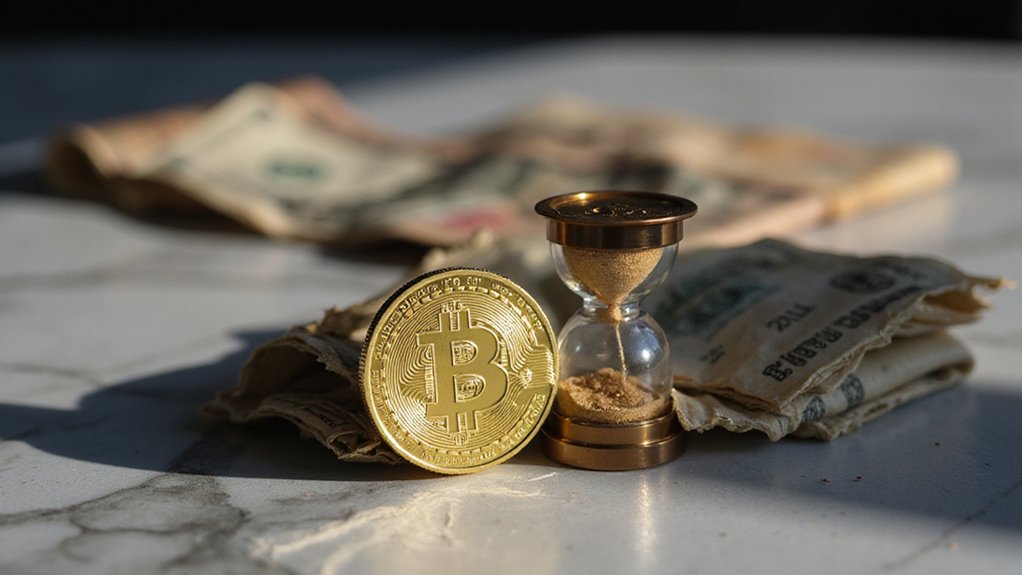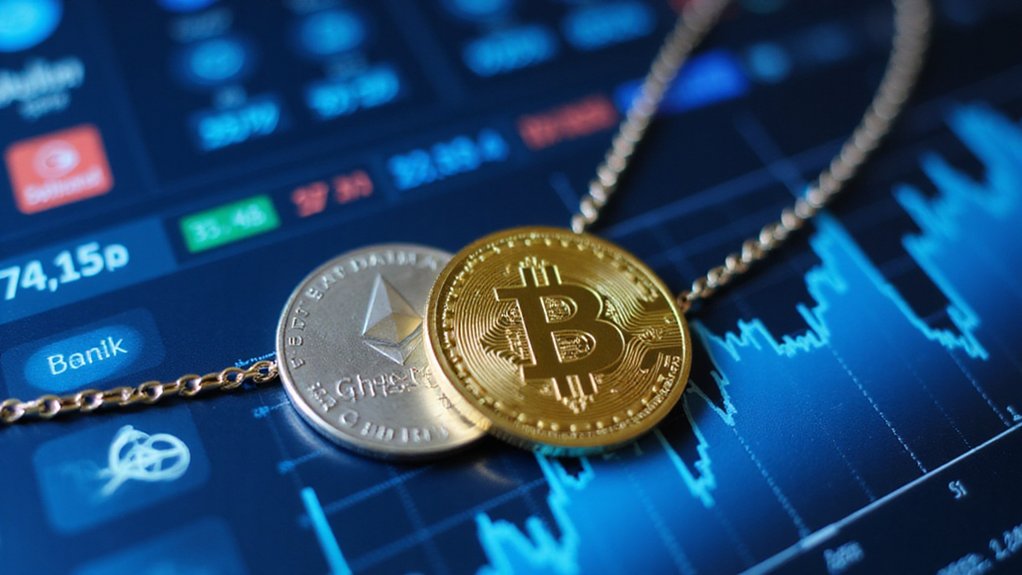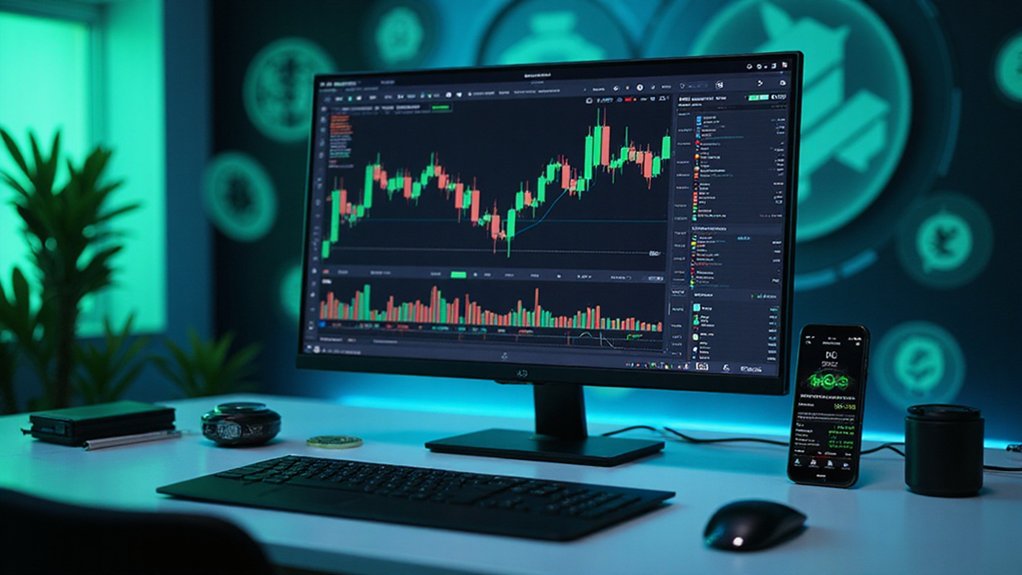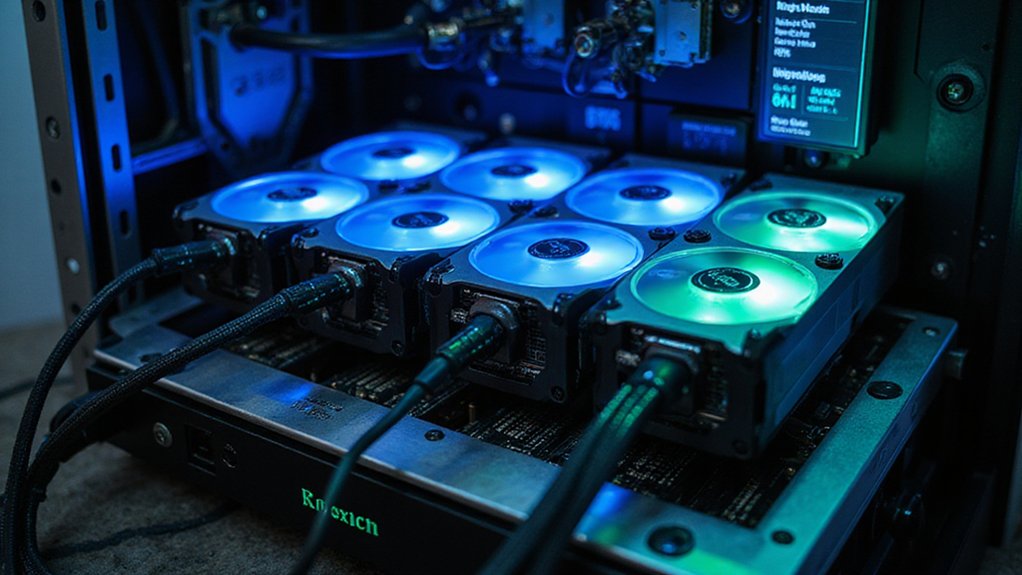A store of value preserves purchasing power across time—the financial equivalent of freezing assets without the freezer burn. Gold, treasuries, and certain cryptocurrencies fit this mold by possessing durability, portability, and relative stability. While inflation erodes traditional stores like cash (nature’s economic entropy at work), robust alternatives provide shelter from monetary devaluation. Real estate, precious metals, and digital assets now compete in this preservation arena—a proof to humanity’s perpetual quest to thumb its nose at time’s economic ravages.
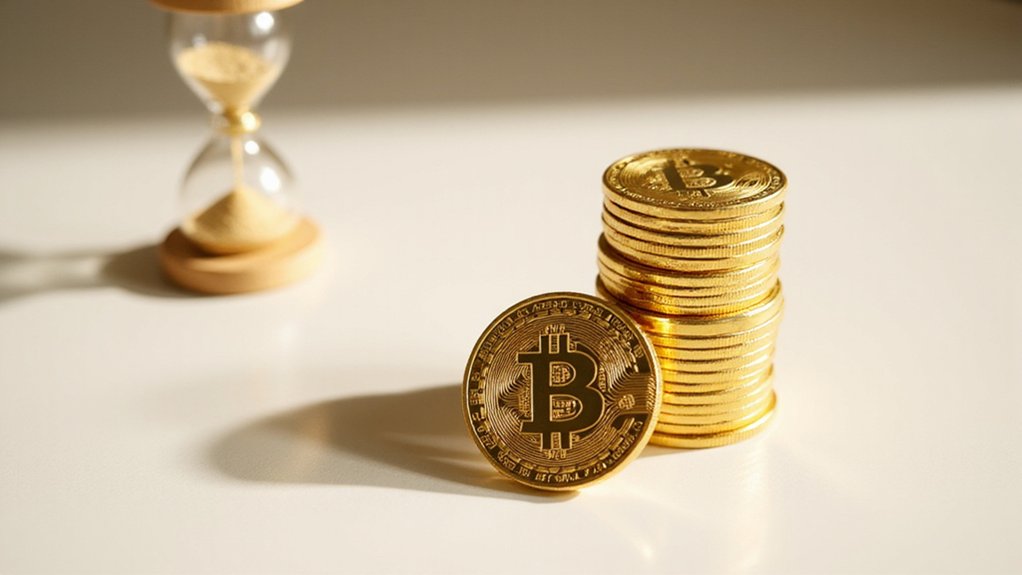
A store of value—that elusive quality sought by investors and savers alike—serves as one of the fundamental pillars of economic functionality in our financial ecosystem.
It represents any asset that maintains purchasing power across time’s relentless march, enabling individuals to preserve wealth rather than watching it slowly evaporate through inflation’s silent tax.
A true store of value stands as wealth’s sentinel against inflation’s erosion, preserving purchasing power in time’s unforgiving current.
The concept, deceptively simple in theory yet maddeningly complex in execution, underpins everything from retirement planning to national treasury management.
For an asset to qualify as a genuine store of value, it must possess several critical characteristics: durability (resisting physical deterioration), portability (facilitating transfer without prohibitive friction), divisibility (functioning at various denominations), stability (maintaining relatively consistent value), and convertibility (allowing transformation into other assets when needed).
These attributes explain why gold has maintained its appeal for millennia while countless currencies have collapsed into historical footnotes.[^1]
Money itself serves as humanity’s primary store of value, though its effectiveness varies dramatically across economies.
When inflation runs rampant—as it inevitably does when monetary discipline falters—citizens predictably flee toward alternative stores of value, be they foreign currencies, precious metals, or increasingly, cryptocurrencies like Bitcoin.
Bitcoin’s value proposition stems from its limited supply cap of 21 million coins, creating a scarcity that protects against inflation unlike traditional currencies.
The phenomenon reflects not merely economic calculation but psychological self-preservation.
According to the Cambridge theory, the demand for money is influenced more by its ability to store value than by its function as a medium of exchange.
In investment contexts, assets functioning as stores of value play a vital defensive role, particularly during market turbulence when correlation between growth assets tends toward unity.
Real estate, certain commodities, and treasuries typically function in this capacity, though each carries its unique risk profile (liquidity constraints, market volatility, and interest rate sensitivity, respectively).
Interest-bearing assets such as U.S. Treasury bonds represent excellent examples as they not only retain value but also provide income generation while serving as safe havens during economic uncertainty.
The pursuit of effective value storage continues to evolve with technological innovation and shifting economic paradigms.
What remains unchanged is the fundamental human need to preserve purchasing power across time—a need that becomes particularly acute during periods of economic uncertainty.
In a world of constant flux, the ability to reliably store value remains as precious as the gold that has served this function for centuries.
Frequently Asked Questions
How Do Inflation Rates Affect Stores of Value?
Inflation erodes traditional stores of value through purchasing power degradation, particularly impacting cash and fixed-income investments.
While some assets wilt under inflationary pressure (bonds, growth stocks, non-commodity equities), others demonstrate remarkable resilience—real estate appreciates, commodities surge, and value stocks outperform their growth counterparts.
The preservation hierarchy becomes evident: hard assets and inflation-linked investments maintain wealth, while paper assets without inflation protection (rather predictably) suffer diminishing real returns over time.
Can Cryptocurrencies Become Reliable Stores of Value?
Cryptocurrencies can theoretically become reliable stores of value, but significant hurdles remain.
Bitcoin’s fixed supply addresses the inflation problem plaguing fiat currencies, yet its price volatility undermines short-term stability.
Institutional adoption and regulatory clarity may eventually temper these wild fluctuations.
The paradox lies in crypto’s dual nature—revolutionary in its scarcity mechanism while simultaneously speculative in its market behavior.
Time will tell whether these digital assets can evolve from curiosities to genuine value reservoirs.
What Makes Gold a Better Store of Value Than Silver?
Gold outshines silver as a superior store of value through its historical stability, maintaining purchasing power while exhibiting lower volatility during economic downturns.
Its density and non-reactive properties enable cost-effective storage and preservation, whereas silver’s industrial demand (56% of usage) subjects it to economic cycle fluctuations.
Despite silver’s affordability, gold’s greater scarcity—being 20x rarer—combined with institutional trust and central bank backing, creates more consistent performance during currency devaluations and inflationary periods.
Are Collectibles Risky as Stores of Value?
Collectibles present substantial risks as stores of value.
Beyond their notorious illiquidity (try selling that Renaissance painting during a recession), they’re burdened with significant carrying costs—specialized insurance, climate-controlled storage, and security systems that steadily erode returns.
The authenticity minefield, unpredictable market whims, and physical vulnerability further compromise their reliability.
Add the punitive tax treatment (the IRS cheerfully applies up to 28% on gains) and specialized knowledge requirements, and one confronts a value preservation mechanism that’s decidedly high-maintenance.
How Do Political Instabilities Impact Different Stores of Value?
Political instabilities affect stores of value unevenly: hard assets like gold typically appreciate during turmoil (the classic “flight to safety”), while fiat currencies often depreciate dramatically.
Real estate may preserve wealth locally but becomes illiquid precisely when liquidity is most desired.
Cryptocurrencies—those would-be digital havens—exhibit surprising correlations with traditional markets during crises.
Collectibles? They’re particularly vulnerable, requiring both physical security and willing buyers—two commodities in short supply amid civil unrest.
